Parque Natural de Urkiola · Ayuntamiento de Abadiño
Situación
Menú principal
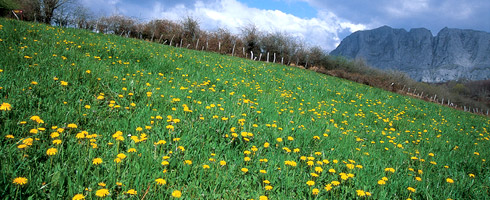
It would be impossible to imagine the Urkiola landscape without the mountain pastureland, which are the basis of the stockbreeding, one of the park's most important traditional activities. Right back in the Neolithic era, over 3,000 years ago, man began to transform the vegetation and replace the forests by pastureland to feed horses and sheep.
The grazing by the cows, mares and sheep fosters the growth of certain species of grass and leguminous plants in pasturelands, which thus creates a very unusual plant community. The dung from the livestock also fertilises the land which helps to make the pastureland more productive. Depending on the local climatic conditions, the type of land, topography and the different human activities, different types of pastureland are formed, such as mountain pastureland, dry grassland and meadows for mowing.
Mountain pastureland is the most common in the Urkiola mountains and can be found at over 600 m. Livestock is grazed there all year round. The typical plants of the mountain pastureland include the Festuca rubra grass, white clover, blue thistle and meadow saffron. The most extensive pasturelands are at Saibi, Urkiolagirre, Zabalandi, Mugarrikolanda and Eskuaga.
Dry grassland, consisting of long-leaved grass and fescue grass, is to found at Aramotz and between Alluitz and Anboto, particularly areas where there is little livestock grazing.
Finally, there are the mowing meadows around the farmsteads, that are usually mown two or three times a year and where the farmers use fertiliser. The typical plants include vernal grass, bromus, meadow clover, common daily and dandelion. Mowing meadows are to be found at the Urkiola pass and around the Gatzaieta and Intxaurralde (Intxalde) farmsteads.
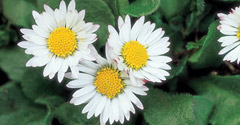
Perennial plant, 5.25 cm high, spoon-shaped leaves, slightly serrated and arranged in a flat rosette. It flowers from March to July and has single flower head, where the outside flowers are white (sometimes pinkish) and yellow in the centre. The leaves of this plant are edible and can be eaten either in a salad or cooked with other vegetables.
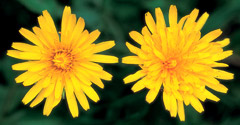
Plant, 5-40 cm high, with a rosette of basal leaves.. The leaves are long and the edge is like a carpenter’s saw. It flowers from March to October and the yellow flowers grow as single heads at the end of a long stem. It is edible and its leaves can be eaten in a salad, although it is better to use young shoots as they can be rather bitter. When the leaves and roots are made into an infusion, they have numerous medicinal properties, including tonics and diuretics.
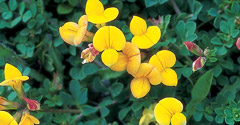
Perennial herbaceous plant, 5-40 cm high, with leaves made out of three round leaflets. It flowers from April to September. The flowers are yellow or orange in colour, frequently with a red tinge, that are arranged in dense heads of 2-7 flowers. The leaves of this plant has a chemical defence that allows it to produce cyanide (a highly toxic substance).
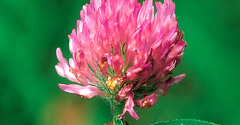
Downy plant, 10-60 cm high. The leaves consist of three elliptic or oval leaflets, often with a lighter hue. It flowers from April to October and the flowers are pink or purple and are in round heads. Its scientific name (pratense) indicates that it lives in meadows. It is planted as forage in the meadows.
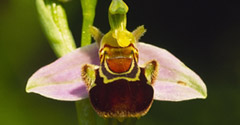
Orchid, 10-50 cm high, with oval or lanceolate leaves. It flowers from May to July and the flowers are arranged in floral spikes with a dozen flowers. The sepals are white or pink, with a green marked nerve. The lobe is purple, velvety and with a violet or reddish-brown hue surround by a yellow edge. Its colours and smell attract insect, which helps to pollinate the plant.
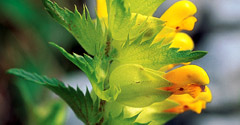
Plant 15-40 cm high, often with branches and with a square-section stem. The leaves are opposed, lanceolate and with a serrated edge. It flowers from May to August and the flowers grow on the auxiliary bud. They are bilabiate and yellow and the teeth of the upper lip are violet. It grows on the pastureland of the slopes of Aitz-Txiki and Alluitz.
2006 - 2007 © Anteiglesia de Abadiño Town Council - All rights reserved